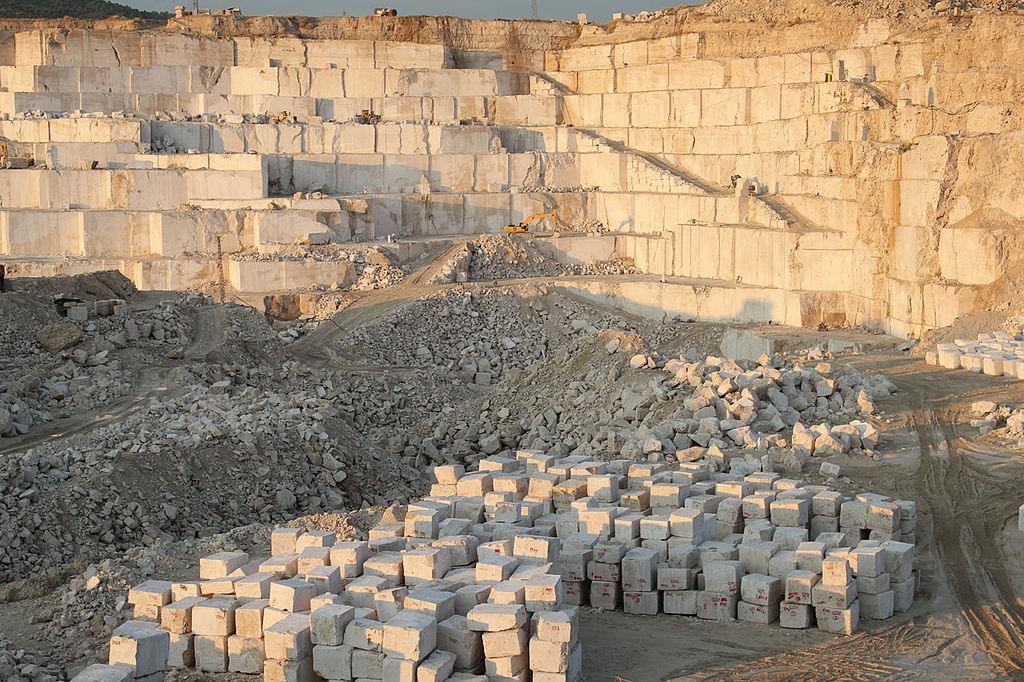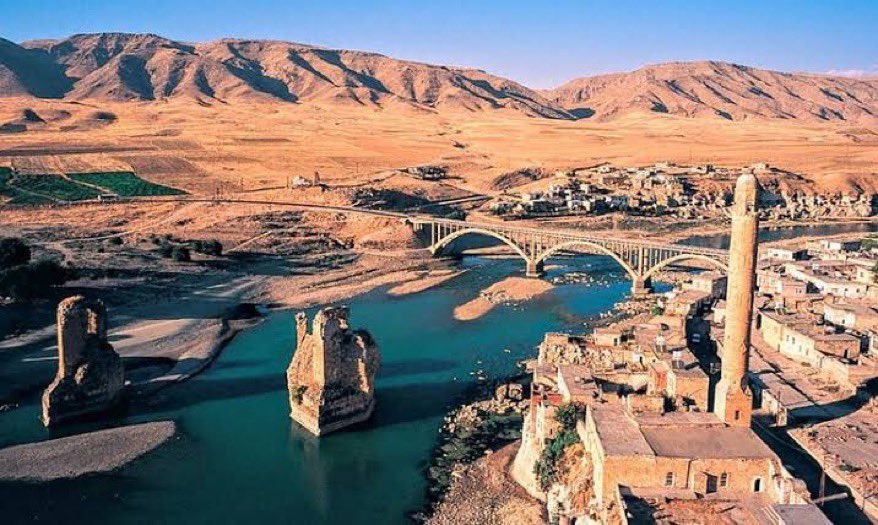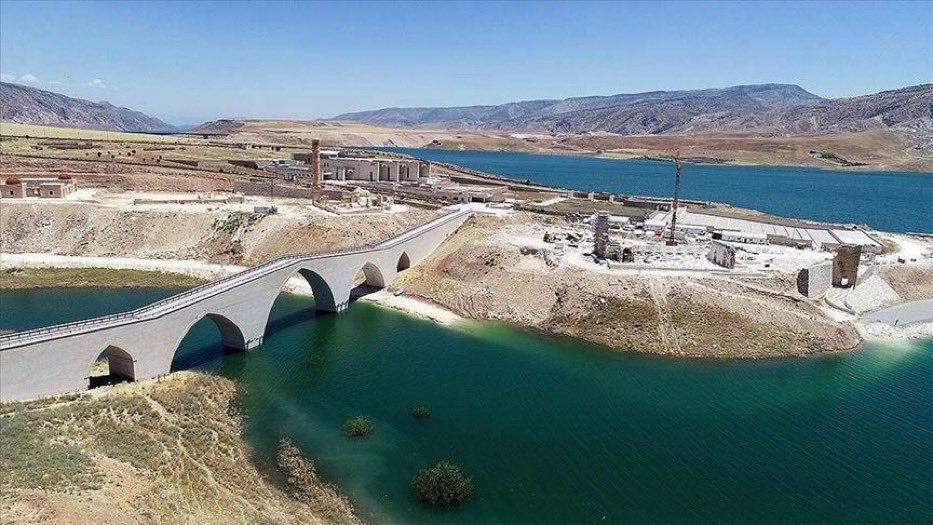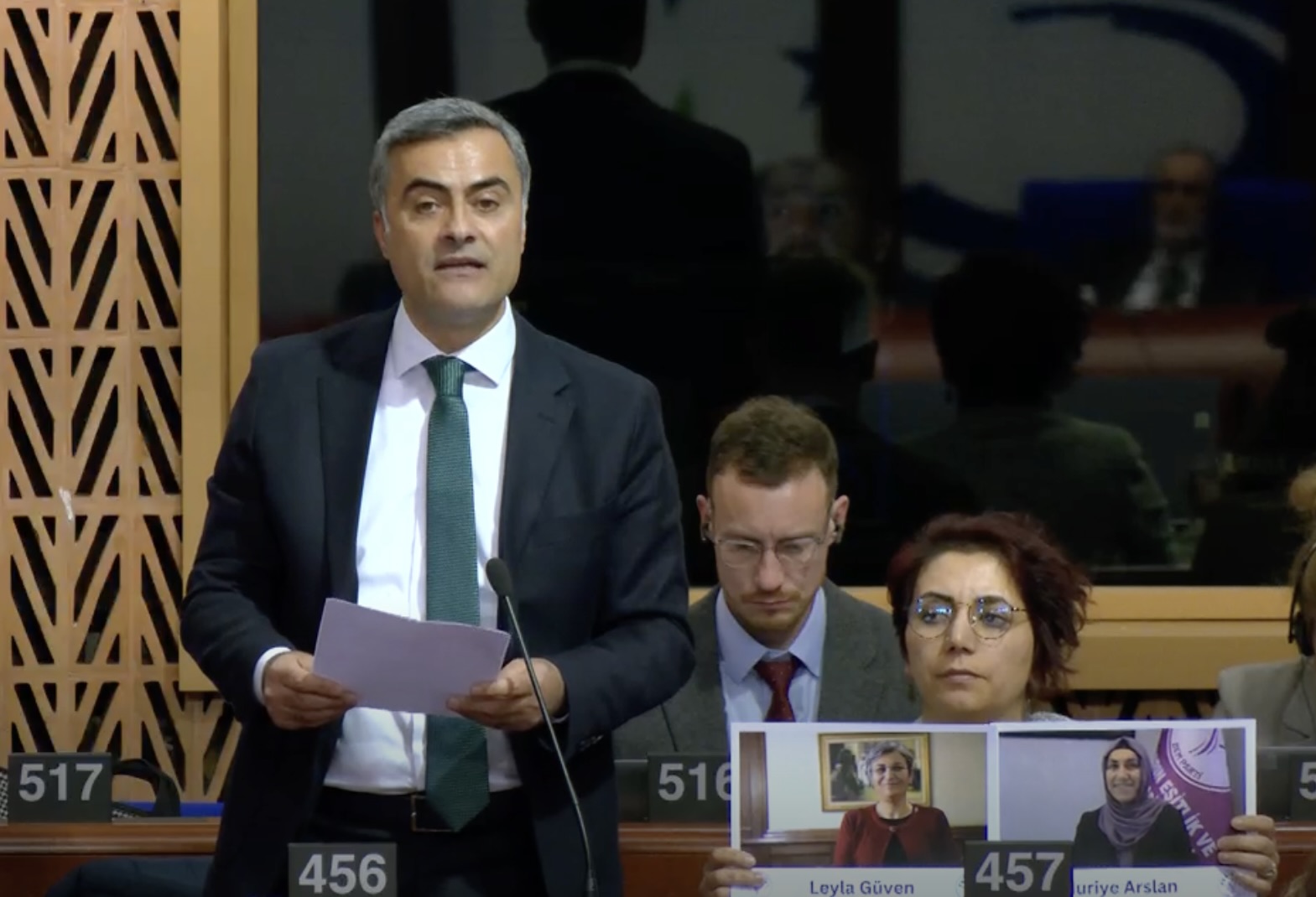How Turkey’s 2025 Mining Law reshapes land, law, and resistance

A new omnibus bill is currently being debated in the Turkish parliament, with five articles approved as of July 17, 2025. Officially titled the “Bill on Amending Certain Laws” (2/3159) but referred to by the public as the “Süper İzinli Talan Yasası” (literally, the “Super Permit for Plundering Law,” amplifying the bill’s enabling of environmental exploitation through fast-track permits), it has been on Turkey’s busy political agenda since April 2025, arguably triggering the most widespread environmental movement in the country’s history.
By shielding trees with their bodies against heavy machinery, marching to the capital, attempting to enter the commission meeting where the bill is being debated, and, most recently, resorting to a hunger strike, villagers from across Turkey have built a grassroots movement, led largely by women, to prevent its enactment. The ongoing movement, which has already left its mark, did not emerge out of thin air. It draws on several local grassroots movements from the past decade, such as those in Akbelen, Bergama, Mount Ida (Kaz Dağları), Cerattepe, and the Munzur Valley
The 23-year AKP era has witnessed a sharp rise in issued mining licenses: compared to 1,186 licenses granted in the first 79 years of the Republic, an estimated 400,000 or more have been issued by AKP governments.
The new law will allow automatic approval of mining permits if state institutions fail to respond within four months, effectively bypassing environmental impact assessments, which are already criticized for being only formalities. It will also facilitate the expropriation of agricultural land and olive groves, particularly in Muğla’s Akbelen and Yatağan regions, where fears of farmland destruction led to widespread grassroots protests. Environmentalists and opposition politicians argue that it will primarily benefit certain large corporations affiliated with the ruling Justice and Development Party (AKP), often referred to by the public as the “Gang of Five,” while undermining public and judicial oversight. Critics warn of long-term ecological damage, including deforestation, water contamination, food insecurity, and biodiversity loss, citing past disasters like the İliç mine collapse as evidence of regulatory failure.
“They say olive trees will be relocated — as if the trees are just tenants and they’re the landlords.”
— Mehmet Torun, “Law of Destruction and Plunder,” Evrensel, 7 July 2025
Beyond Olive Trees: Invisible Ecocide in Kurdistan
While public outrage and media attention over the proposal have mostly focused on the olive groves and agricultural lands in the country’s west, the new bill will consolidate the legal basis of what Kurdish activists call “a special warfare policy disguised as development” in Kurdish-majority east and southeast Turkey (Northern Kurdistan, or Bakur in Kurdish), where securitization and dispossession policies have long been at the center of an unrestrained resource extraction campaign.
The Kurdish ecology movement1 defines ecocide as a “special warfare policy” aimed at breaking social resilience, part of a colonial strategy based on military operations, dams and hydroelectric power plants (HPP), intentional wildfires, and stone and mineral quarries.
Historically, in regions such as Çiyayê Cûdî (Cudi Mountain), Gabar, Licê (Lice), and Munzur during the 1990s state of emergency against the Kurdish insurgency, hundreds of thousands of hectares of forest were burned, and more than 2,000 villages were evacuated on the grounds of harboring Kurdish guerrillas. The Southeastern Anatolia Project (GAP), a large network of dams on the Euphrates and Tigris rivers, has been criticized not only for environmental destruction but also for depopulating the Kurdish countryside.
After the collapse of the 2015 peace process, forest fires increased again. Thousands of hectares of forest in Şirnex (Şırnak) and Dêrsim (Tunceli) burned following military operations. In Şirnex, Colemêrg (Hakkari), and Bedlîs (Bitlis), large-scale tree cutting was carried out under “security” measures to restrict guerrilla movement, while subcontracted logging brought in the economic profiteering element.
In 2025 alone, ten new mining and energy projects were launched in Şirnex. These projects, affecting districts such as Hezex (İdil), Silopî (Silopi), Cizîr (Cizre), and Basa (Güçlükonak), range from solar and hydroelectric power plants to new oil drilling projects. One of them, the Nergüş (Dalgaduriği) Hydroelectric Power and Irrigation Dam project, was planned around Çiyayê Cûdî, a region under heavy military control. One of the villages to be affected by the project, Şax (Çağlayan), was designated a first-degree archaeological site in 2024. According to the locals, the Environmental Impact Assessment (EIA) report glosses over the submerging of pastures and croplands, and the destruction of several endemic species. During a protest, villagers condemned the project as an “ecological and cultural disaster” that would erase millennia-old heritage and displace communities already uprooted in the 1990s. In parliament, pro-Kurdish Peoples’ Equality and Democracy Party MP Nevroz Uysal criticized the EIA as “scientifically baseless and politically driven,” accusing authorities of manipulating heritage surveys, sidelining local voices, and pushing through a project that combines environmental destruction with displacement under the guise of development.
In the same province, the residents of Dêrahînê (Uzungeçit) village in Qileban (Uludere) recently revolted against the zinc mine project, forcing the company to flee. In Dêrsim, several new hydroelectric projects are being pushed through, threatening the Munzur Valley, sacred for Alevi belief.
In Amed (Diyarbakır), the increase in oil extraction has damaged croplands and polluted water resources. After a leakage near Silwan (Silvan) and Hezro (Hazro) in 2024, water wells “turned pitch black,” as one villager explained. Independent investigations confirmed toxic leakage into the groundwater, yet drilling continued.
In Wan (Van), the village of Şamanîs (Topçu Değirmeni) in Payîzava (Gürpınar) district was forcefully evacuated to make way for a coal mine. “This is part of a policy of erasing villages from the map, forcing people into displacement, and handing over their land to mining companies,” says Dilek Akdağ of Wan Eko-DER, speaking to The Amargi. Despite a reported closure order and fine issued after legal action by the Wan Bar Association’s Ecology Commission, mining operations continue at the site.
These cases are not isolated. From Gabar to Besta, to the foothills of Çiyayê Reş (Karacadağ), the landscape is scarred by drilling towers, concrete walls, and dam reservoirs. Behind the law’s language of “green transition” and “national interest” resides extractive colonialism, as defined by activists.
Ecological Resistance and the Broader Struggle for Democracy
The resistance, though less visible, is just as determined as in the west of the country. Women like Derya Akyol and Dilek Akdağ lead the struggle from the grassroots, with an anti-capitalist and feminist praxis. “We know that ecological destruction is an ideology of capitalism, and we carry out our struggle from an anti-capitalist perspective,” says Akyol, who also stresses that in Kurdistan the fight for ecology is inseparable from struggles for democracy, peace and the defense of culture against assimilation.
Given this context, ecological resistance is not merely an issue of olive trees. It is about memory, land, and the right not to be uprooted from one’s land. The 2025 law is poised to repeat the trauma of Hasankeyf, the destruction of a 12,000-year-old historic city, submerged under the Ilısu Dam, displacing tens of thousands of people in Êlih (Batman). With the central authority’s powers now expanded, making arbitrary expropriations and “strategic zone” declarations default, entire landscapes, along with their histories, risk being erased in the name of “development.”


Hasankeyf: The first photo shows its beauty before submersion, the second reveals the flooded ruins afterward
A License to Unrestrained Resource Extraction
The villagers who gathered outside the Parliament in July may soon return to their homes, but the amendment will likely pass, creating a vision of Turkey where land is not shared heritage but a resource to be extracted for private profit.
Yet, in this moment, there is more hope than meets the eye. With a potential peace process tentatively underway, this bill, and the widespread resistance it has ignited, could mark the beginning of a shift in grassroots politics. The protests have already shown the potential to cross the country’s long-standing political and ethnic divides. If the peace talks hold and fighting ends for good, this emerging movement could pave the way to a broader united front against extractivist policies. In a country where grassroots struggles have long been fragmented, such a shift could herald a new anti-capitalist movement with real social power.
Endnotes
- “Kurdish ecology movement” refers primarily to the Mesopotamia Ecology Movement (Mezopotamya Ekoloji Hareketi), a network of local ecology councils and initiatives active in Bakur (Northern Kurdistan, in eastern and southeastern Turkey) and Rojava (Western Kurdistan, in northern Syria). Emerging in the mid-2010s and publicly formalized at its first conference in Wan, 2016, the movement has framed environmental destruction in these regions as part of a broader “special warfare” strategy by the Turkish state, encompassing military operations, large-scale dam and hydroelectric projects, deliberate forest fires, and intensive mining. See: First Conference of the Mesopotamian Ecology Movement, Final Declaration, April 23-24, 2016, in Wan (Van), North Kurdistan. ↩︎
Serap Gunes
Serap Güneş is a freelance translator and writer based in Istanbul. She holds a PhD in International Relations and European Politics from Masaryk University, where her research focused on minority rights and EU–Turkey relations. Her work has appeared in both academic journals and independent media outlets.



